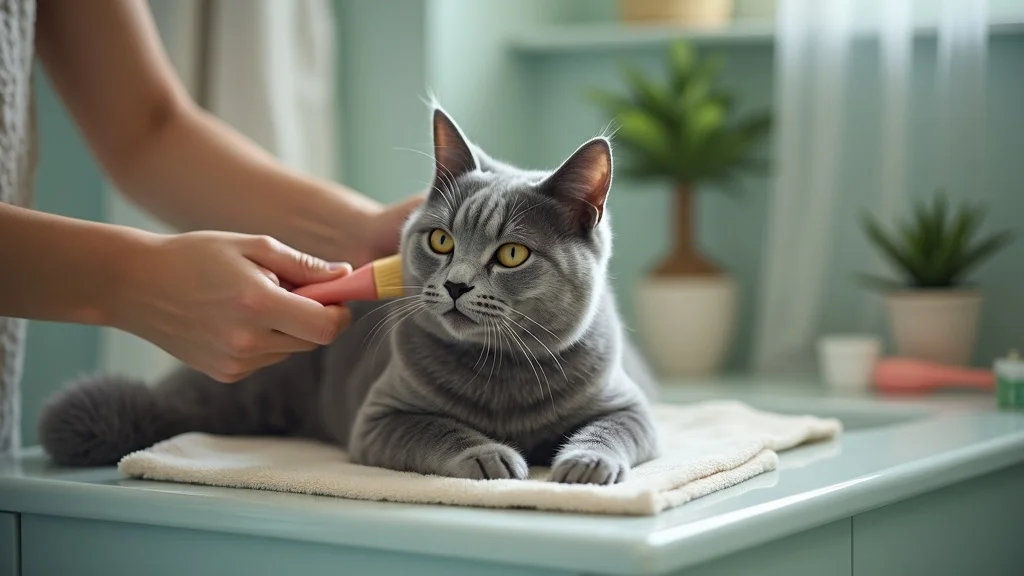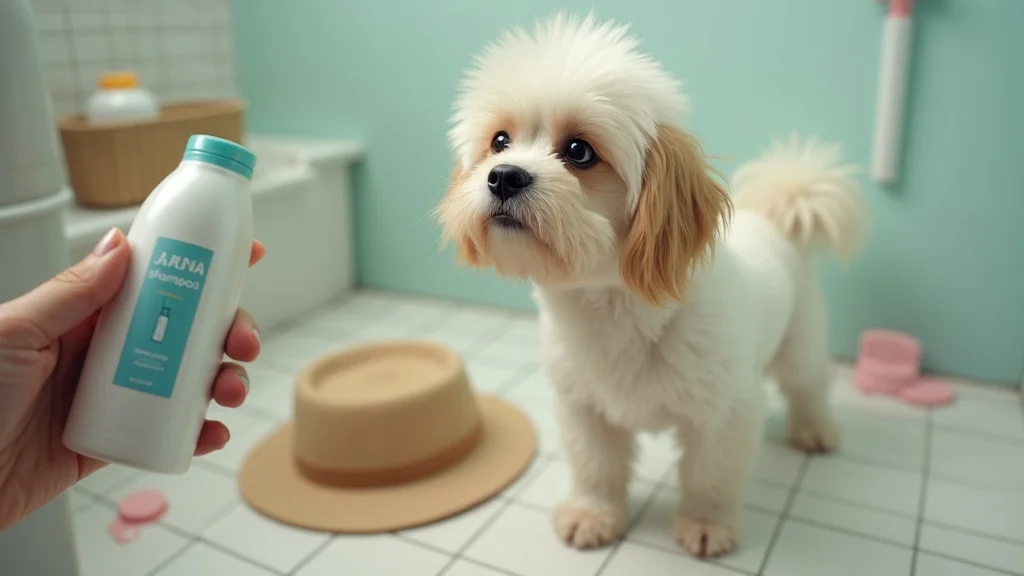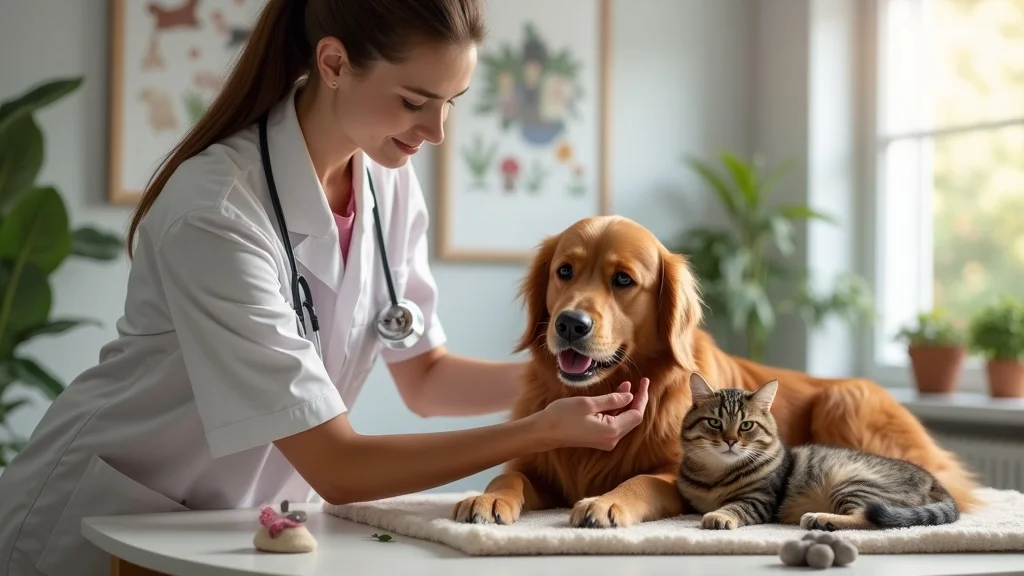Think you know how often you should bathe your dog or cat? What if the real answer could give your furry friend a shinier coat and healthier skin—while saving you time and worry? Dive into the facts and banish the myths about bathing your pets for good!
Curious About How Often Should I Bathe My Dog/Cat? Let’s Bust the Myths
Many pet parents wonder, how often should I bathe my dog/cat? Over the years, advice has ranged from “as little as possible” to weekly spa sessions. The truth lies somewhere between, with bathing routines depending on your pet’s coat type, activity level, skin health, and risk of ear infections. Bathing is about more than fresh smells—done right, it helps prevent dry skin, manages shedding, and can even highlight signs of potential health issues. But bathe your dog or cat too often, and you may strip away essential natural oils or trigger irritated skin, making problems worse. Let’s separate fact from fiction and set your pets (and their skin and coat) up for lifelong health and comfort.
What You'll Learn About How Often Should I Bathe My Dog/Cat
- Frequency of bathing your dog and cat
- Vet-backed tips on skin health, coat type, and ear infections
- Signs of overbathing and common mistakes to avoid
- Step-by-step dog and cat bathing routines
- Answers to the most Googled questions about bathing your pet

Understanding How Often Should I Bathe My Dog/Cat: Key Considerations
Before you make bathing part of your routine, it's important to recognize why how often should I bathe my dog/cat is not a one-size-fits-all answer. Bathe your dog too frequently, and you may notice dry skin or even ear infections if water gets trapped in their ears. The same goes for bathing your cat: while cats are usually exceptional self-groomers, certain situations (like rolling in something sticky or having long hair prone to mats) mean they’ll need a little help. Whether you’re a new pet parent or an experienced dog owner, factors such as coat type, skin problems, and your pet’s exposure to dirt and the outdoors all matter.
- Differences between bathing your dog and bathing your cat
- Why coat type, skin health, and ear infections matter
- Recognizing dry skin and its effects on your pet
- The role of your pet's activity level and environment
"Bathing your pet is not just about keeping them clean; it's about maintaining their health inside and out." – Dr. Taylor, DVM
How Often Should I Bathe My Dog? Tailoring Bathing Frequency for Skin Health
The best bathing schedule for dogs depends heavily on their coat type, activity level, and whether they’re prone to dry skin or ear infections. Dogs with oily, water-resistant coats—like Labradors—may need baths every few months, while breeds with hair that mats easily, such as poodles, could benefit from more frequent washing. Dogs who love outdoor adventures and swim or roll outdoors will get dirty faster and need more regular cleaning than a couch-loving pup. Remember, using a specific shampoo for your dog's skin and coat is crucial to avoid health issues related to overbathing, including a dry coat or irritated skin.
Coat Type and Bathing: Why Breed Matters for How Often Should I Bathe My Dog
Not all coats are created equal! The type of fur your dog has directly influences how often you should bathe your dog. Short-haired breeds like beagles can go weeks without a bath, as their coats repel dirt and don’t gather debris as quickly. Long-haired breeds like collies require baths more often, especially to prevent mats and manage shedding. Curly-coated breeds, such as poodles, need unique coat care because their fur tends to trap debris and oils. Overbathing any dog—regardless of breed—strips away natural oils, increasing the risk of dry skin and secondary skin problems.

How Activity Level and Outdoor Exposure Affect How Often You Should Bathe Your Dog
If your dog is always on the go, romping in parks, hiking trails, or swimming in lakes, you’ll probably notice more dirt and stronger odors. The more time your pup spends outdoors, the higher their risk for fleas or ticks and the more frequently you’ll need to bathe your dog. On the other hand, dogs who prefer the cuddly comfort of indoor living need only occasional baths, mostly to address bad odors or if their coat feels greasy. Assess your dog's activity level, and adjust the bathing schedule accordingly to promote skin health without risking overbathing.
Dealing with Dry Skin and Ear Infections: Vet Tips on Safe Bathing Your Dog
Dry skin and ear infections are top concerns for pet parents who bathe their dog frequently or incorrectly. Always choose gentle, dog-safe shampoos, ideally formulated for sensitive skin, to help retain your pooch’s natural oils. Take extra care to keep water away from the ears—use cotton balls and avoid pouring water directly over your dog’s head. Watch for signs of irritated skin, like excessive scratching, flaky patches, or dullness, and reduce bathing frequency if you notice them. Your vet can recommend specific treatments if your pet is prone to skin conditions or has a history of ear infections.
| Dog Breed / Coat Type | Recommended Bathing Frequency | Notable Issues (e.g., dry skin, ear infection risk) |
|---|---|---|
| Short-haired (Beagle, Boxer) | Every 2-3 months | Watch for dull or dry coat, minimal ear infection risk |
| Long-haired (Collie, Sheltie) | Every 4-6 weeks | Prone to matting, increased risk for skin problems |
| Curly/Non-Shedding (Poodle, Doodle) | Every 3-4 weeks | Matting, higher risk of ear infections |
| Oily/Water-Resistant (Lab, Spaniel) | Every 2-3 months or as needed | Ear infection risk, skin health concerns if overbathed |
Bathing Your Cat: How Often Should I Bathe My Cat and Best Practices
Bathing your cat is usually a rare event, and most cats do a fine job with daily self-grooming. However, long-haired cats or those with certain skin conditions might occasionally need a helping hand to prevent mats and reduce excess shedding. Spot-cleaning dirty areas and regular brushing are often all that's needed, but if your cat has rolled in something sticky or malodorous, a bath may be in order. The key is to avoid overbathing, which can lead to dry skin or disrupt skin and coat health, especially for indoor-only cats.
Shedding, Grooming, and Skin Health: How Often to Bathe Your Cat
Cat breeds with short hair usually need a bath only every few months—if at all—while long-haired breeds might benefit from a bath every 1-2 months, particularly during high-shedding seasons. Shedding is a natural process, but when loose hair builds up, mats can form, pulling on the skin and causing discomfort. Regular grooming removes excess hair, preventing most skin issues before they start. If you notice bad odors, sticky fur, or increased shedding, check for underlying health issues and adapt your cat’s grooming routine accordingly.
When (and Why) to Bathe Your Cat to Prevent Ear Infections
Most cats manage ear health on their own, but if your veterinarian recommends bathing (for allergies or greasy skin), take extra steps to protect the ears from moisture. Long-haired cats are especially prone to mats around their ears, which can trap moisture and debris. When you bathe your cat, use a damp cloth for spot-cleaning and keep water out of the ear canal. Remember: always consult your vet if your cat is shaking their head, scratching their ears, or you notice a bad odor, as these can be signs of ear infection risks.
- Short-hair cats
- Long-hair cats
- Indoor vs outdoor cats

Recognizing Signs of Overbathing Your Dog or Cat
Overbathing can cause more harm than good, leading to a range of skin and coat problems in both dogs and cats. Signs of too many baths include dry, flaky skin, a dull or brittle coat, and increased scratching. If you notice your pet is constantly itchy or showing subtle behavioral changes—like avoiding being touched during grooming sessions—these could all point to irritated or unhealthy skin. To keep your pet’s natural oils balanced and maintain skin health, always follow a vet-recommended bathing schedule and adjust bathing frequency if you see these warning signs.
- Dry, flaky skin
- Dull or brittle coat
- Increased scratching
- Behavioral changes
Step-by-Step: How to Bathe Your Dog and Cat Safely Without Risk of Ear Infections
Bathing your pet doesn’t have to be stressful. A consistent routine lowers anxiety and helps protect your dog or cat from unintended health issues—especially ear infections and dry coat. Here’s a proven, safe way to bathe your dog or cat:
- Gather grooming and bathing supplies
- Prepare the bathing area
- Use pet-safe shampoos for coat type and skin health
- Protect ears from water to minimize ear infection risk
- Thorough rinsing and gentle drying
Make bathing a positive experience by offering treats and patiently introducing your pet to the process. Remember, dry skin often results from poor rinsing or harsh products—always select formulas designed for pets, and towel dry gently to keep fur soft and the skin protected.

Common Mistakes to Avoid When You Bathe Your Dog/Cat
Pet owners sometimes make bathing mistakes that can harm the skin and coat of their pets. Using **human shampoo** is a top error: these products are too harsh for animal skin and strip natural oils, leading to dry skin or worse, a chronic skin condition. Other common mistakes include overbathing (which upsets healthy skin flora), failing to fully dry your pet’s coat (creating a breeding ground for infections), and ignoring breed-specific coat care needs.
- Using human shampoo
- Overbathing
- Failing to dry coat properly
- Ignoring breed-specific grooming needs

How Often Should I Bathe My Dog/Cat if They Have Skin or Ear Health Issues?
Dogs and cats with pre-existing skin conditions or a history of ear infections require special attention. Bathing schedules must be tailored—sometimes reducing frequency to avoid stripping natural oils, other times increasing it when dealing with allergies or parasites like fleas and ticks. Always use vet-recommended medicated shampoos designed to soothe and heal without irritating sensitive skin. Never bathe your pet if their skin is open or raw without veterinary clearance, as this can cause further complications.
Addressing Dry Skin: Adjusting Bath Schedules for Dogs and Cats
Adjusting the **bathing schedule** is key for pets with sensitive or dry skin. If you notice irritation after baths, decrease frequency and switch to moisturizing, hypoallergenic shampoos. Look for signs such as excess scratching, dandruff, or a dull coat—these can indicate the need to slow down bath frequency and increase gentle brushing for coat care and skin health. Consulting your veterinarian about your individual dog or cat’s needs is the best way to avoid long-term health issues.
Special Treatments: Medicated Baths for Ear Infections or Allergies
Pets struggling with ongoing **ear infections** or skin allergies may be prescribed a medicated bath routine. These special baths address specific pathogens or inflammatory responses but should always be monitored by a veterinary professional. Too much of even a good thing—like frequent medicated baths—can lead to fragile, damaged skin and new health issues. Always follow vet instructions regarding frequency and after-care to protect your dog or cat’s overall skin and coat health.
Watch for expert guidance on spotting the signs of overbathing—including subtle skin changes and behavioral cues. This video will help you set a healthy, personalized routine for how often you should bathe your dog/cat.
People Also Ask: How Often Should I Bathe My Dog/Cat?
How often should I bathe my pet cat?
Answer
Most cats rarely need routine baths unless they get into something dirty or have a medical condition. Regular brushing usually suffices, with baths every few months for long-haired breeds or specific health needs.
How often should an indoor dog get a bath?
Answer
Indoor dogs generally benefit from a bath every 4 to 6 weeks, but this varies by coat, activity, and skin health. Consult your vet for breed-specific guidance.
Are you supposed to give your pet cat a bath?
Answer
Cats are expert self-groomers and usually require minimal bathing. Only bathe your cat if necessary due to dirt, allergies, or vet instructions.
What is overbathing a dog?
Answer
Overbathing a dog means washing them too frequently, which can strip oils, dry out their skin, and lead to health issues including increased risk of skin infections.
FAQs About How Often Should I Bathe My Dog/Cat
- Can I bathe my dog or cat too little? — Yes, but it’s rare. Too few baths can allow odors to linger, but healthy pets usually require only minimal bathing paired with routine grooming.
- Which shampoos are safest for pets with sensitive skin? — Choose hypoallergenic, fragrance-free shampoos made specifically for pets. Avoid human products, which upset the skin’s pH and strip natural oils.
- How can I tell if my dog or cat needs a bath? — Look for visible dirt, oily fur, persistent bad odors, or increased shedding. Pets with allergies or sensitive skin may need periodic vet-guided baths.
Key Takeaways on How Often Should I Bathe My Dog/Cat
- Bath frequency depends on breed, coat type, activity level, and health
- Overbathing causes dry skin and health issues
- Regular grooming and observation help set the right schedule
- Vet advice is essential for pets with sensitive skin or recurrent ear infections

Make Pet Care Easier: Subscribe for More Tips
Want more tips, stories, and pet care guides delivered straight to your inbox? Join our monthly PawPress newsletter and stay in the loop with the latest for your furry friends. 🐾 Subscribe now — your pets will thank you!
Love your pet? Pay attention to their skin and coat—and when in doubt about how often should I bathe my dog/cat, consult your vet for a safe, happy, healthy routine.
When determining how often to bathe your dog or cat, several factors come into play, including breed, coat type, activity level, and skin health. For dogs, bathing frequency varies:
- Short-haired breeds like Beagles or Boxers typically require baths every 6–8 weeks.
- Long-haired or double-coated breeds such as Golden Retrievers or Huskies may benefit from a bath every 4–6 weeks to prevent matting and manage shedding.
- Active or outdoor dogs that frequently get dirty might need more frequent baths to maintain hygiene.
- Dogs with skin conditions may require specialized bathing routines as advised by a veterinarian.
Overbathing can strip natural oils from your dog’s skin, leading to dryness and irritation. It’s essential to use dog-specific shampoos and consult with your veterinarian to establish a bathing schedule tailored to your dog’s specific needs. (petmd.com)
Cats, being meticulous self-groomers, rarely need baths. However, situations like exposure to sticky substances or certain health conditions may necessitate occasional bathing. Long-haired cats might benefit from baths every 1–2 months to prevent matting. Always use cat-specific shampoos and ensure the bathing process is as stress-free as possible.
In summary, the ideal bathing frequency for your pet depends on individual characteristics and lifestyle. Regular grooming and monitoring of skin health are crucial, and when in doubt, consulting your veterinarian will help establish the best routine for your furry friend.
 Add Row
Add Row  Add
Add 




Write A Comment